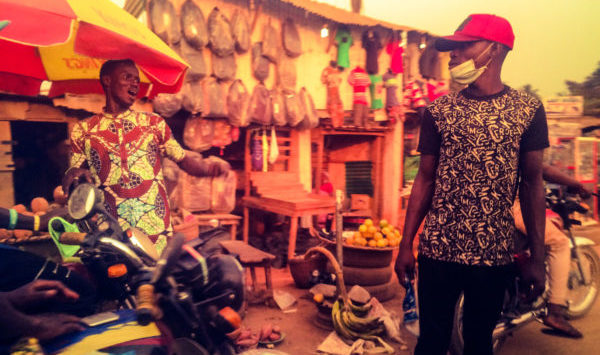The American Institute of Architecture Students (AIAS) is celebrating the 60th anniversary of student excellence in leadership, service, and design. In honor of our 60th year, the AIAS is excited to share 60th: Legacy, an ongoing weekly celebration of and thanks to our alumni sponsored by Professional Publications, Inc (PPI). PPI is a publisher of professional licensing exam materials since 1975 and wants to recognize those who have helped the AIAS achieve 60 years of success.
Name
Andrew Caruso, AIA, NCARB, LEED AP BD+C, CDT
Organization
Hatch
Title
Senior Consultant, Urban Solutions
Connect
Bio
Andrew is an architect and economist, working at the intersection of urbanization and development within the world’s emerging cities. Currently, Andrew is a Senior Consultant with Hatch, a global engineering, development and management consultancy with more than 65 offices on six continents. As a key member of its Urban Solutions practice, Andrew helps reshape world cities through innovative technical and strategic consulting services — master planning, economic analysis, policy advisory, and resiliency planning — for public and private clients facing the pressures of rapid urbanization. Andrew was among the youngest individuals ever named a Fulbright Specialist by the US Department of State. He is a Richard Upjohn Fellow and a Henry Adams Medalist of the American Institute of Architects, receiving its national Young Architect Award in 2013. Andrew was also named one of the industry’s “Top 40 Under 40” by Building Design + Construction Magazine. Andrew has held seats on the national Boards of Directors for the American Institute of Architects, the National Architectural Accrediting Board and the American Institute of Architecture Students, and has twice represented the United States as an official delegate to the UIA World Congress on Architecture. Previously, Andrew helped lead global workforce strategy for Gensler, one of the world’s largest multi-disciplinary design firms and also served as the 51st national president and chairman of the board for the American Institute of Architecture Students (AIAS).

Click to watch Caruso’s presentation to the South African Institute of Architects about Emerging Trends for the Economics of Urbanization
ARE Prep Tip: What is one piece of advice that you would give to those starting to test?
Don’t put off taking the ARE — the experience only gets more difficult with time.

How did your experience with AIAS help you to achieve your goals?
AIAS provided three unique opportunities: (1) it taught me the value of building relationships, (2) it gave me the opportunity to learn and practice leading complex projects and organizations, and (3) it shaped and challenged my point of view on the profession’s most pressing issues.
What and/or who shaped you into who you are and what you do today?
While living and working in China, I realized that my skills as an architect were not (by themselves) sufficient to address the complex challenges of rapid urbanization in emerging markets. I made the difficult decision to leave “traditional practice” to pursue a Masters in International Economics and International Development. This pivot changed my life and career — it landed me right at the intersection of the massive forces of economic growth, international policy, and the spatial implications of rapid urban migration. It has given me much broader and more powerful leverage to confront many of the issues cities face, issues which are often economic, political, and social before spatial.
How can someone best change the world?
Changing the world requires incredible flexibility — the ability to operate simultaneously between the visionary and the pragmatic; between your core discipline and disciplines you know nothing about; between unbridled individual leadership and the importance of collaboration at a massive scale. Feeling that “stretch” (without pushing so far you and/or your initiative breaks) means that you’re doing something right.
What is one tip you would give yourself in your 20s?
Looking back, I expected to “plan” my future too much. The structure of the architecture profession is so rigorously choreographed that it can not only exclude or discourage opportunities to develop parallel experiences, but also set artificially narrow expectations of career development. I think it’s important that early career professionals meaningfully consider broad potential pathways for their future, especially those that seem less defined within our current concept of architectural practice.
What is a decision or action you made in school that influenced your trajectory?
I made a conscious decision to maximize my time outside of the design studio. By getting meaningfully involved in activities outside of the studio, I was healthier, happier, more inspired, and more informed about the broader issues of the world (and my profession). Looking back, an hour spent building relationships with local community leaders, for example, made a much bigger impact on my career than had I spent that same hour at my studio desk.
If you, or another AIAS alumni you know, deserves recognition for their contribution to the profession and society at large, please use the link below to nominate them for this honor.











